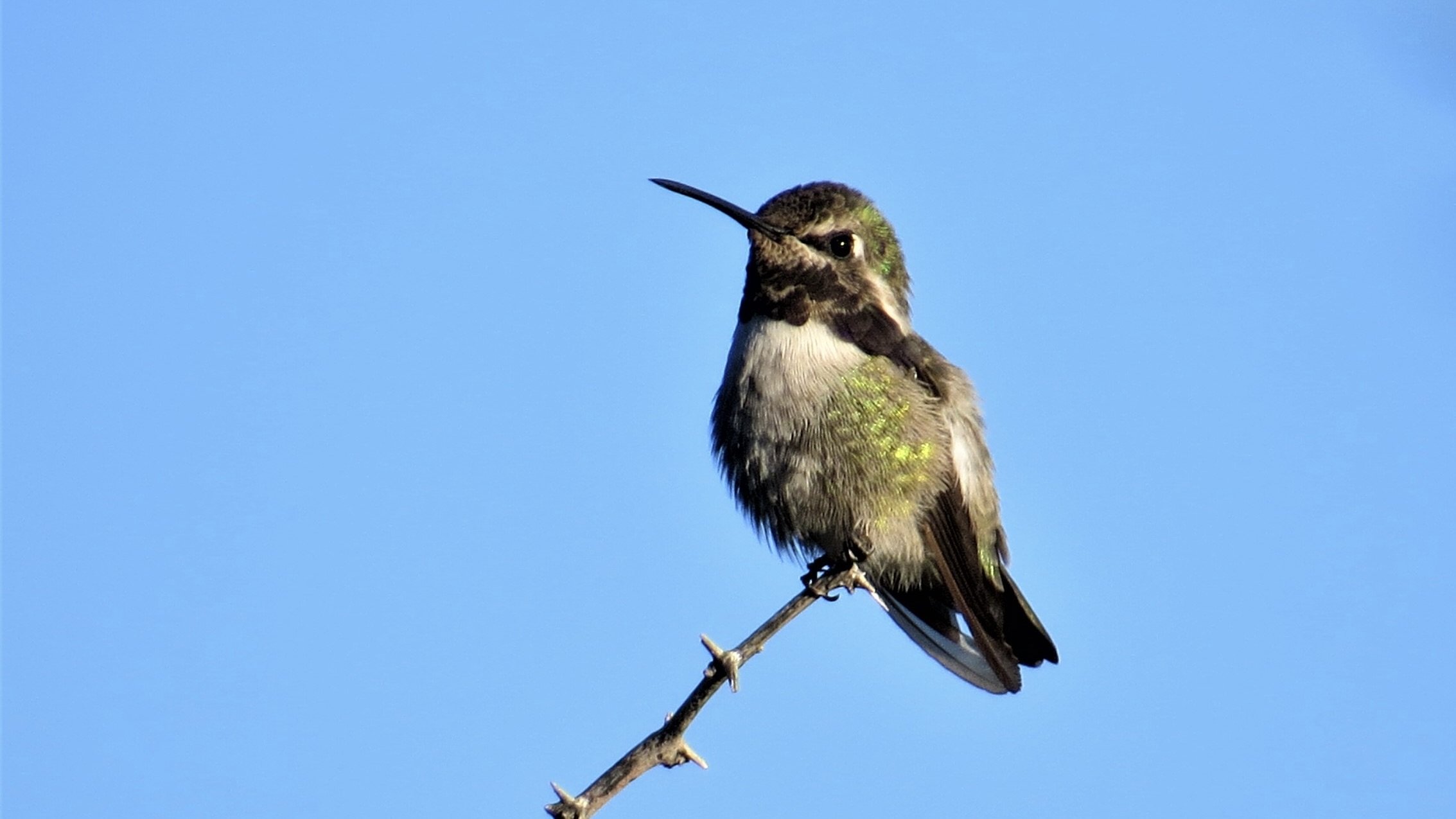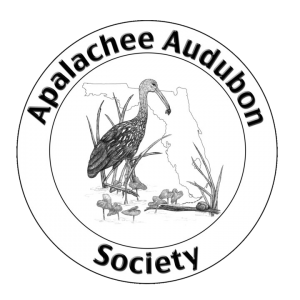Feature photo: Gila Woodpecker, by Don Morrow
We were dog sitting at my son’s place in Tucson while he was in Iceland. Behind his house there’s a desert wash full of mesquite and desert hackberry. On a July morning at first light, his back porch is a good place to enjoy a cup of coffee in the temporary coolness of a desert morning.
The wash is a bit of wild desert in suburban Tucson. It has Gambel’s quail, desert cottontails and javelinas, along with the bobcats and coyotes who hunt them. Costa’s Hummingbirds like to perch on the tallest hackberry stems, while Verdins and Lucy’s Warblers seem to prefer the mesquite. There’s a lone saguaro that is favored by a Gila Woodpecker. Everywhere there are White-winged Doves, flying, sitting or calling. Cooper’s Hawks frequently sweep through looking for them. I get to enjoy all of this from my son’s porch while drinking my morning coffee.
Costa’s Hummingbird, by Don Morrow
Tucson is not an old city. The Presidio San Augustin Del Tucson was established along the banks of the Santa Cruz River in 1776 as a walled fortress housing seventy-five Spanish soldiers, their officers and families. Probably no more than a few hundred people in total. It has grown significantly since then and now has more restaurants.
Tucson is surrounded by mountain ranges that rise up out of the Sonoran Desert. The largest range, the Santa Catalinas, is also the closest and forms the Northeast perimeter of the city. Today, the dog will enjoy one of her regularly scheduled stays at Dogtopia, visiting with her canine friends, and we will head into the Santa Catalinas to escape the desert heat and do some birding.
We’re headed for the upper slopes of Mount Lemmon. The mountain is known as Babad Do’ag or Frog Mountain by the Tohono O’odham Nation and may have had other names in the past. People have lived in the area for ten thousand years, but any former names have been lost to the mists of time along with their speakers. The current name references Sara Plummer Lemmon, a botanist, who in 1881 was the first white woman to reach the summit. She had been accompanied by her botanist husband -- it was their honeymoon trip -- and a local rancher who had volunteered to be their guide. Although this is the only mountain named for her, several plants and one plant genus, Plummera, also bear her name.
The bird species found in the mountain ranges of Southeastern Arizona are uniquely different from those in the surrounding deserts. We’ll have a chance for several dozen species, some of which are only found here.
Our specific birding goal was Rose Canyon, about twenty miles east of our son’s house and, at 7,000 above sea level, almost a mile higher. Pine Flycatchers are being seen there. Although recent sightings of this Mexican species have been spotty, birding is good there and it is worth the trip even if we don’t find Pine Flycatcher. By road, we will travel over forty miles to reach the canyon.
The last half hour of the drive to Rose Canyon covers seventeen miles of the serpentine Mount Lemmon Highway and passes through several different plant zones as it ascends the mountain. It starts at 2,500 foot altitude in desert scrub. Saguaros and ocotillo sprout from the exposed rock on the lower slopes of the mountain. By the time the road has climbed to four thousand feet, you’re in chaparral. The cacti are gone and there are scattered shrub live oaks and manzanita. The exposed areas are covered with grasses, dried out by the summer heat. Higher up, the chaparral blends into oak woodlands and, above six thousand feet, there is a thick coniferous forest of ponderosa pine with scattered Douglas fir and Gambel’s oak.
We arrived at the turnoff for Rose Canyon just after 8:00 am. The ponderosa pines here are old and, in most places, have no understory. The sparse ground cover beneath them lends a park-like feel to the surrounding woods. It’s cooler up here on the mountain, the temperature is in the low seventies and will only make it up to the mid-eighties later in the day. By the time we had driven the mile-and-a-half down to the parking area for Rose Lake, a dammed portion of the creek, we had already seen Western Bluebird, Yellow-eyed Junco and Western Tanager.
Yellow-eyed Junco, by Don Morrow
There are a number of camping areas along the entrance road. The Pine Flycatchers had been seen near the last camping area, Black Bear Flat, which sits between the road and Rose Creek about a quarter mile before the end of the road. Earlier in the summer, the flycatchers had nested on the hillside across the creek from the campground.
We decided to walk up the creek bed to get to Black Bear Flat. Rose Creek is not a perennial stream. It is monsoon season in Arizona, a season with occasional afternoon downpours, and a recent storm has left scattered puddles and pools in the creek bed. There is intermittent vegetation growing along the shallow creek and we alternate walking in the creek and on the narrow trail that closely follows it.
Acorn Woodpecker, by Don Morrow
By the time we had gone a few hundred feet, we had seen Spotted Towhees and Acorn Woodpeckers. Broad-tailed Hummingbirds were feeding on the flowers of red penstemon. Most of the birds that we saw were flitting about in the patches of box elder growing along the creek. We kept getting distracted by Yellow-eyed Juncos, which popped up everywhere. Things were getting intense. We ran into Grace’s and Virginia Warbler, multiple vireo species; Plumbeous, Warbling and Hutton’s, and both White-breasted and Pygmy Nuthatch.
Grace’s Warbler, by Don Morrow
My wife called me over to look at a flycatcher. Pine Flycatchers are very similar to Cordilleran Flycatchers. We decided that it was a Cordilleran and not a Pine. While watching it we noticed a family of Black-throated Gray Warblers that were working through the low vegetation. Looking up, I saw two raptors in an open patch of clear blue mountain sky. They were black, broad-winged with short tails that had distinctive black and white bands, Common Black Hawks.
Common Black Hawk, by Don Morrow
Up on the hillside above the Black Bear Flat campground we started running into birders and exchanged notes with them. We learned that there were no Pine Flycatcher sightings yesterday and only one report of a heard-bird early this morning.
We spent some time looking and then decided to go downslope to Rose Lake and try for the flycatcher again later. As we followed the creek down, high up in a pine, a Painted Redstart was displaying. A small black warbler with a bright red chest and belly, it repeatedly spread its tail and wings, revealing white wing patches and tail edges. Down at the lake, there were several Mallards and a pair of Violet-green Swallows were sweeping low over the water. We also found American Robins, but otherwise we saw only the same species that we had been seeing.
We worked our way back up the creek for a second try at Pine Flycatcher. It was now late morning and birding was starting to slow down. We had continued to run into flycatchers, but they were all Cordilleran. We did come across a family of Red-faced Warblers, more Western Tanagers and many more birders. The American Birding Association’s youth birding group, Camp Chiricahua, was out looking for the bird. No one reported having seen Pine Flycatcher.
Red-faced Warbler, by Don Morrow
We gave up on the Pine Flycatcher and walked down the entrance road to our car to grab lunch. A Hairy Woodpecker was working on a cavity in a ponderosa pine and a Black-headed Grosbeak flew by our picnic table as we ate our sandwiches. With a long drive ahead of us and a need to pick up the dog, we decided that it was time to head home.
As we drove down the mountain, we made a few random stops to look for birds, but added only Steller’s Jay and Mexican Jay to our trip list. Despite missing the Pine Flycatcher and a few other species that would have been good, like Hermit Warbler and Greater Pewee, it had been a good day of birding.
By the time we picked up the dog and got back to our son’s house it was 3:00 pm. The White-winged Doves were still flying around in the wash in the 108° heat on a Tucson afternoon in July.







